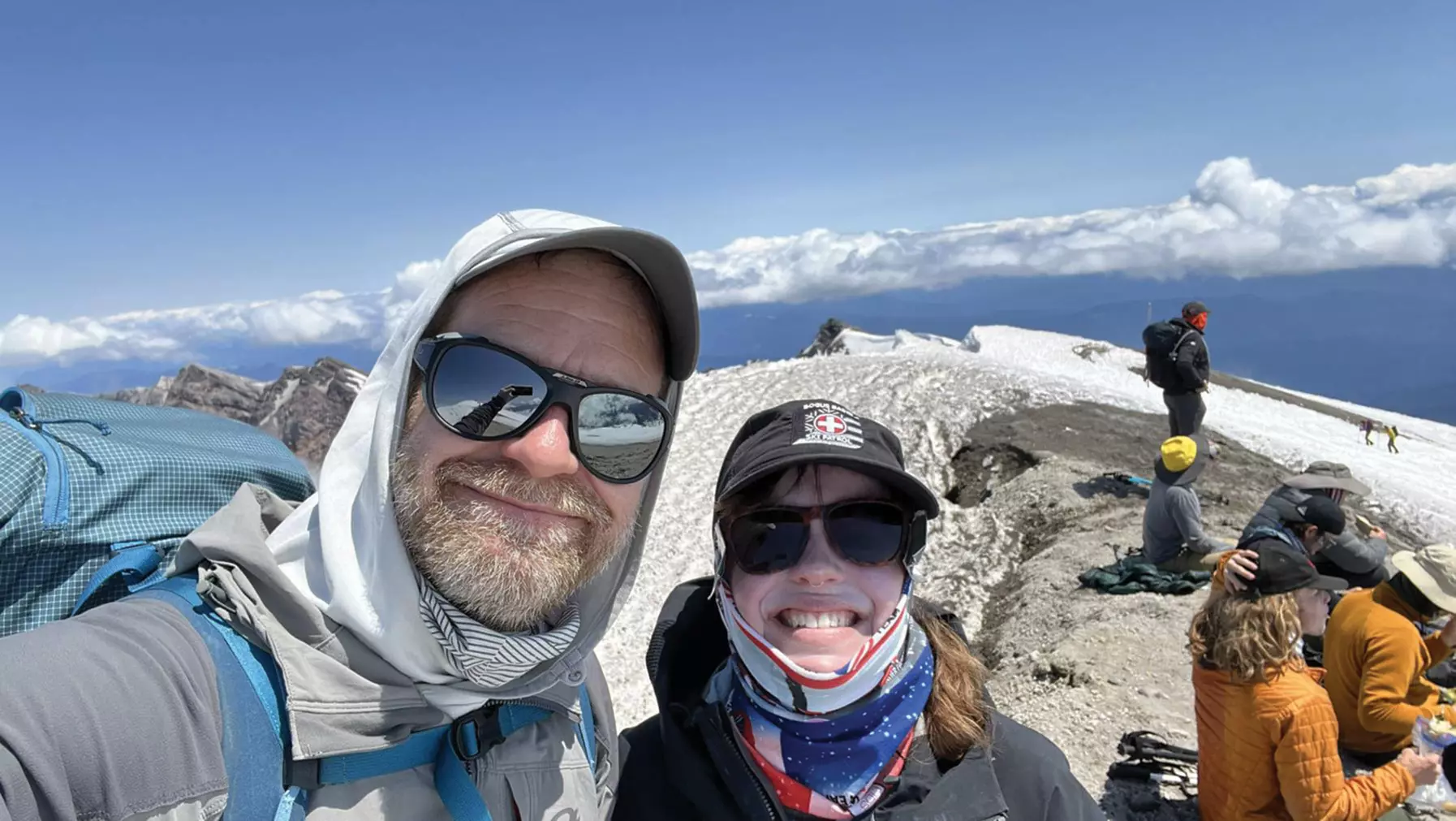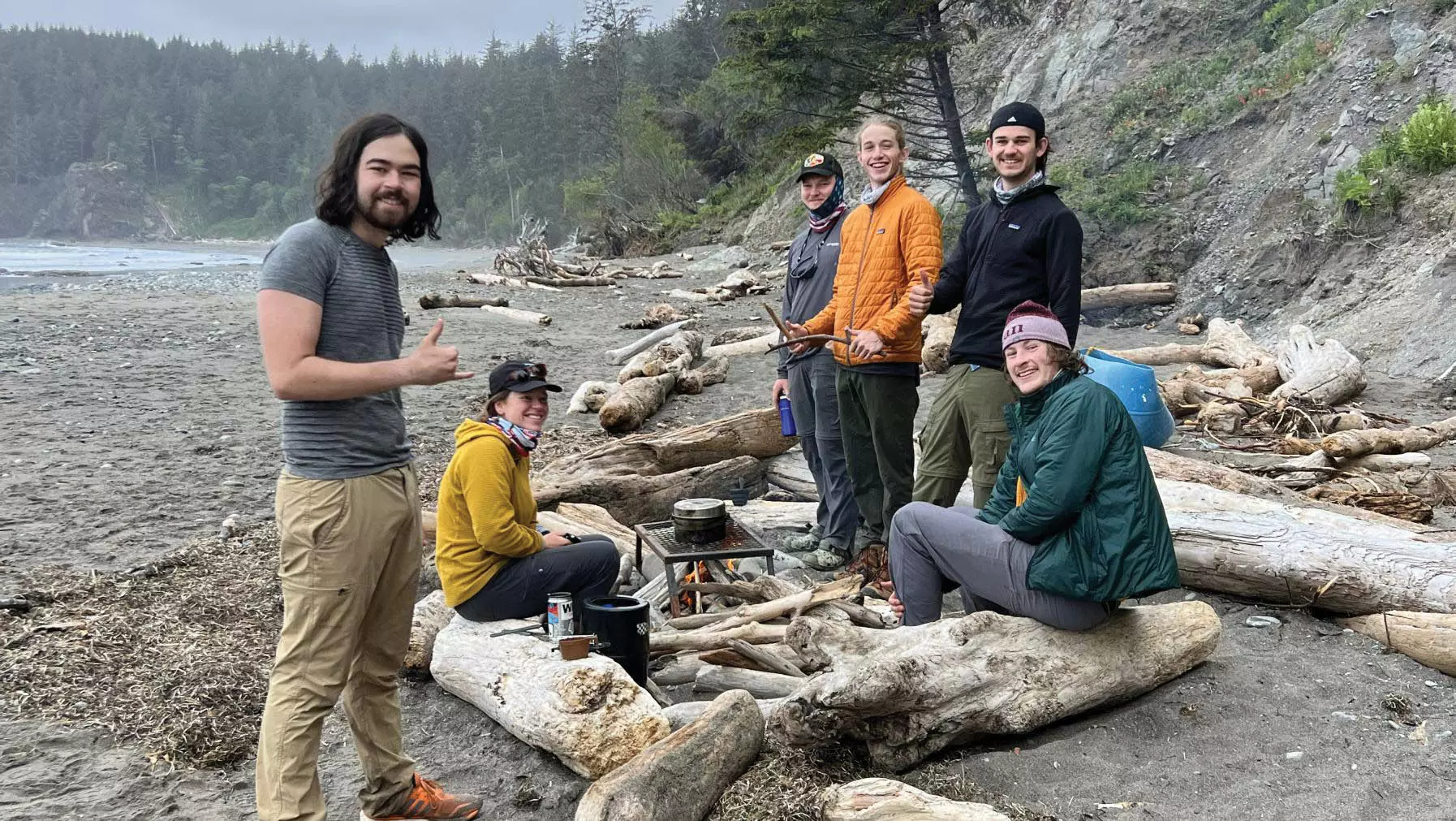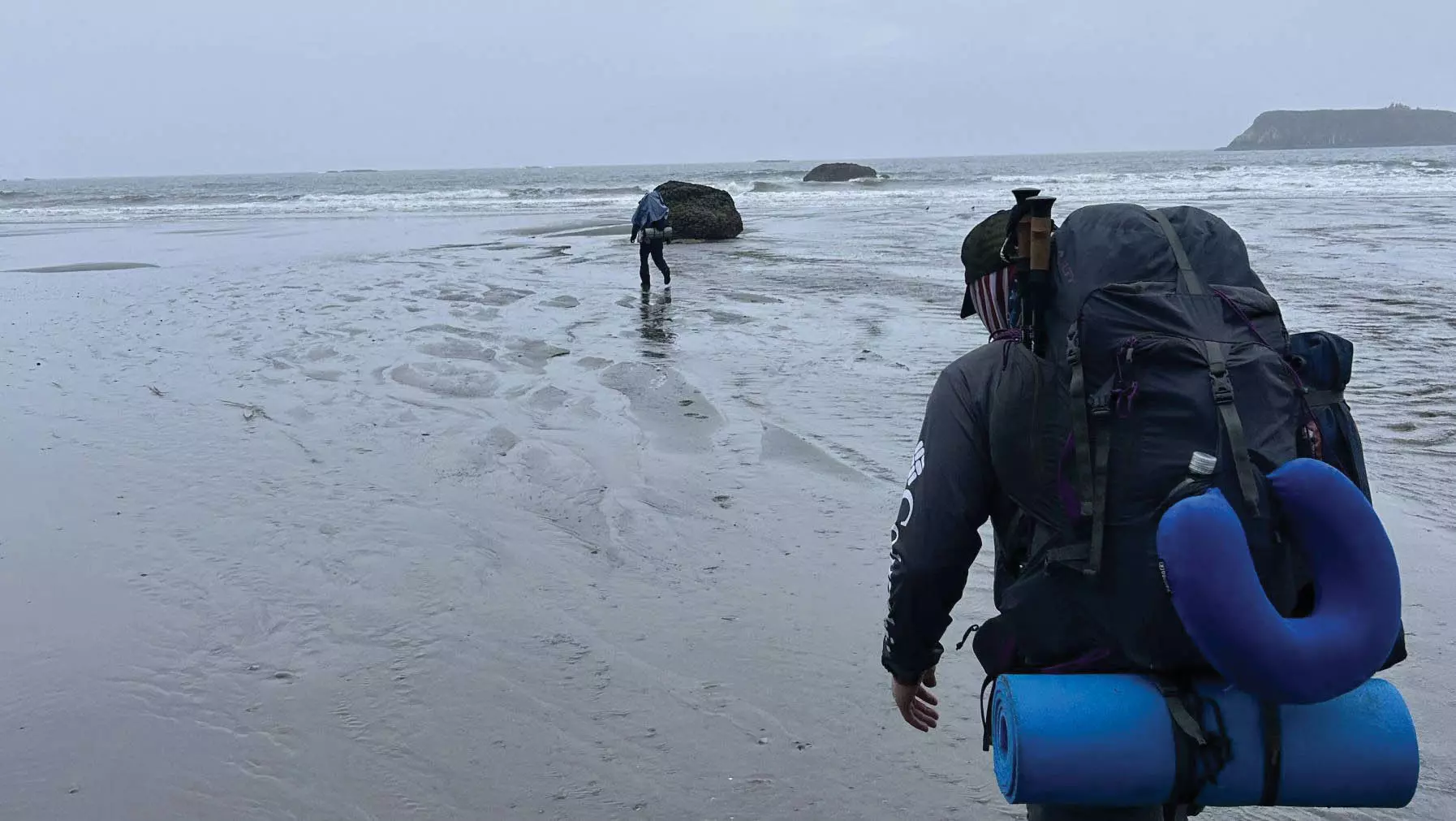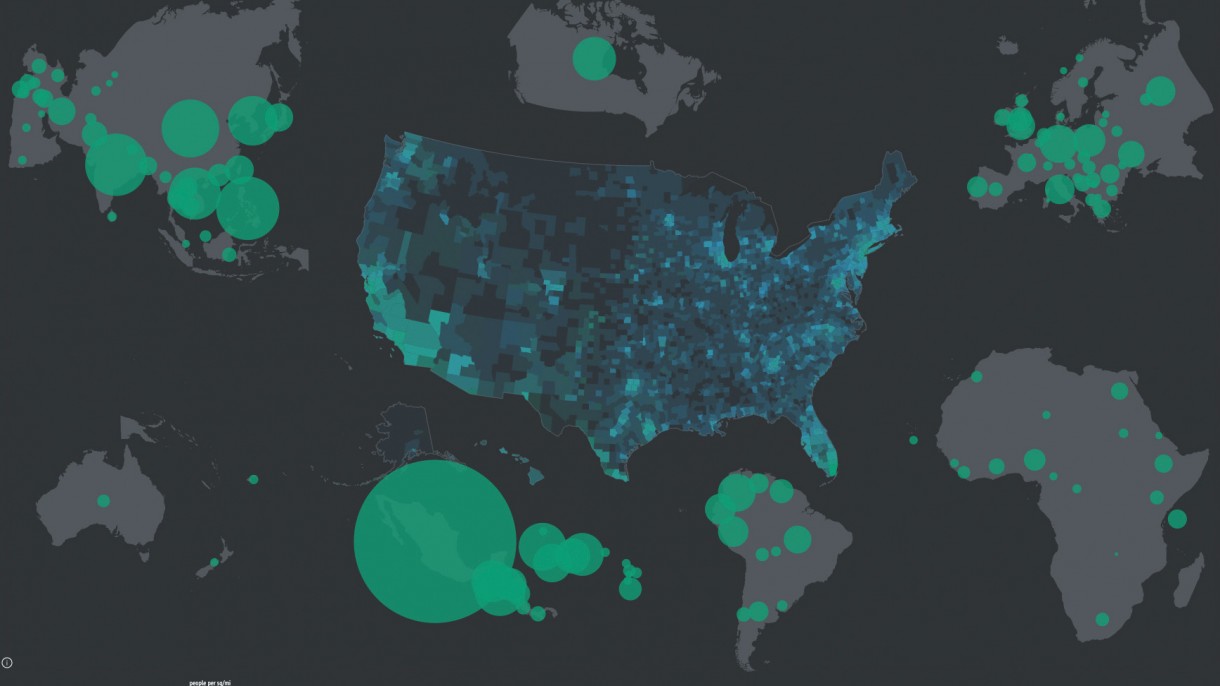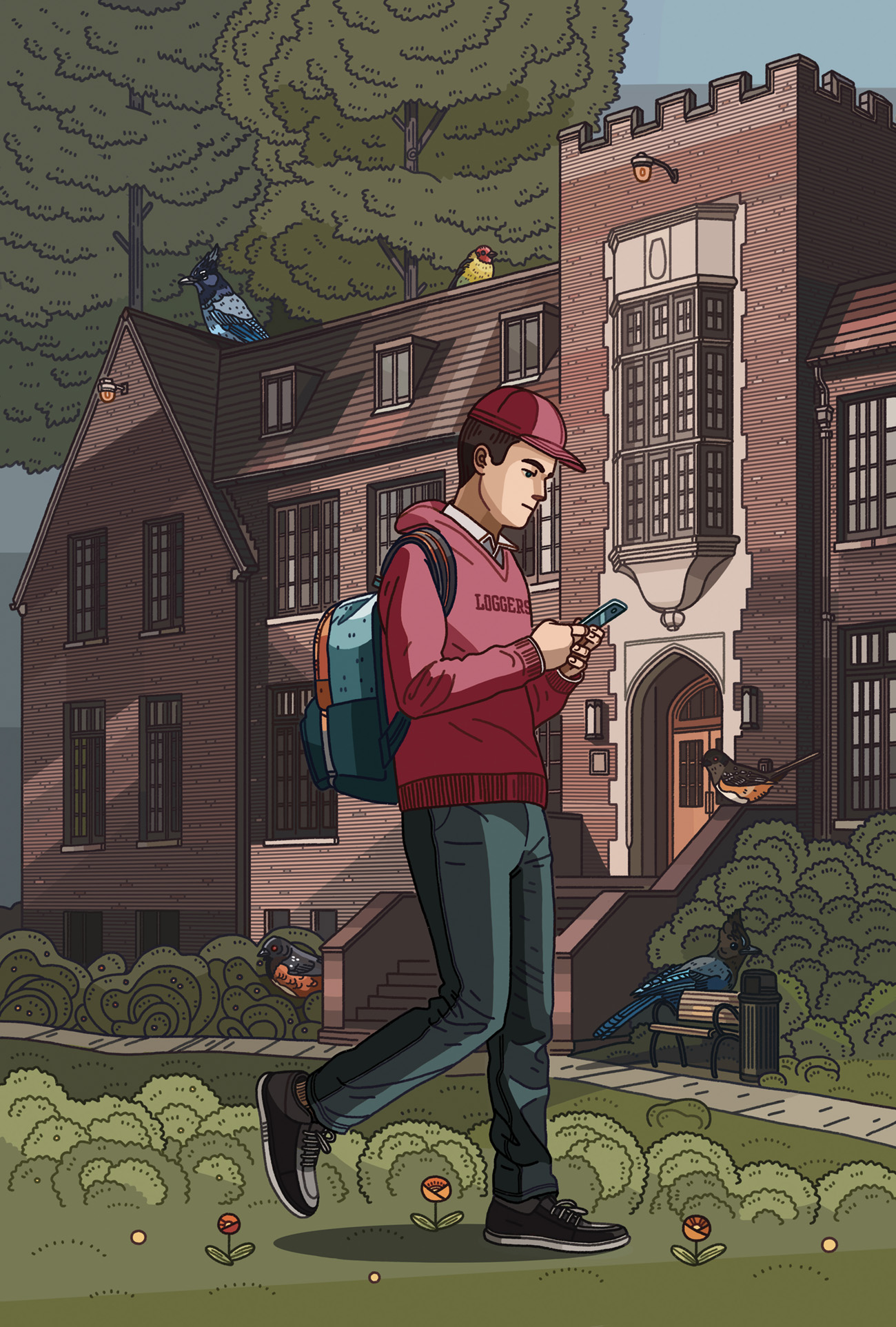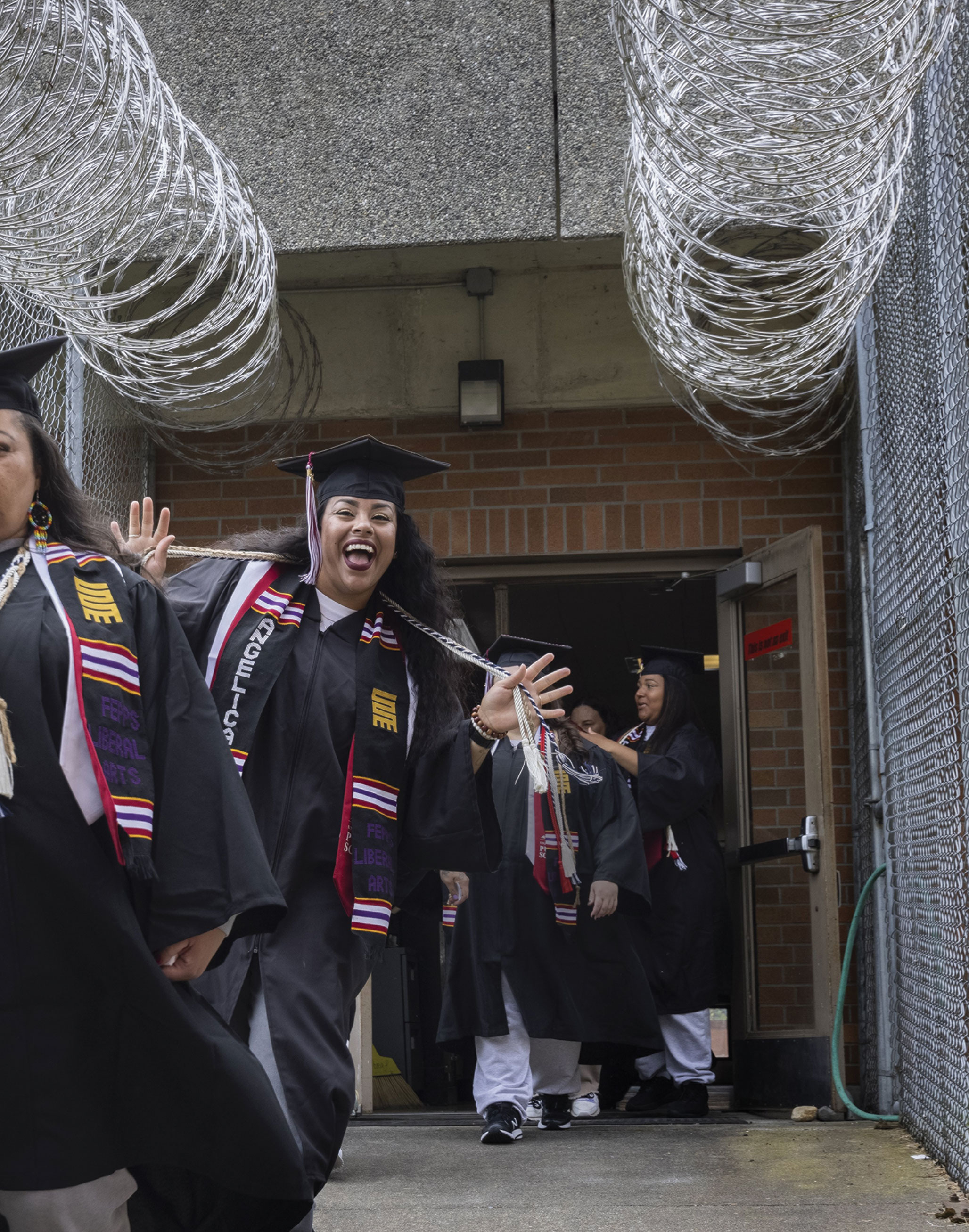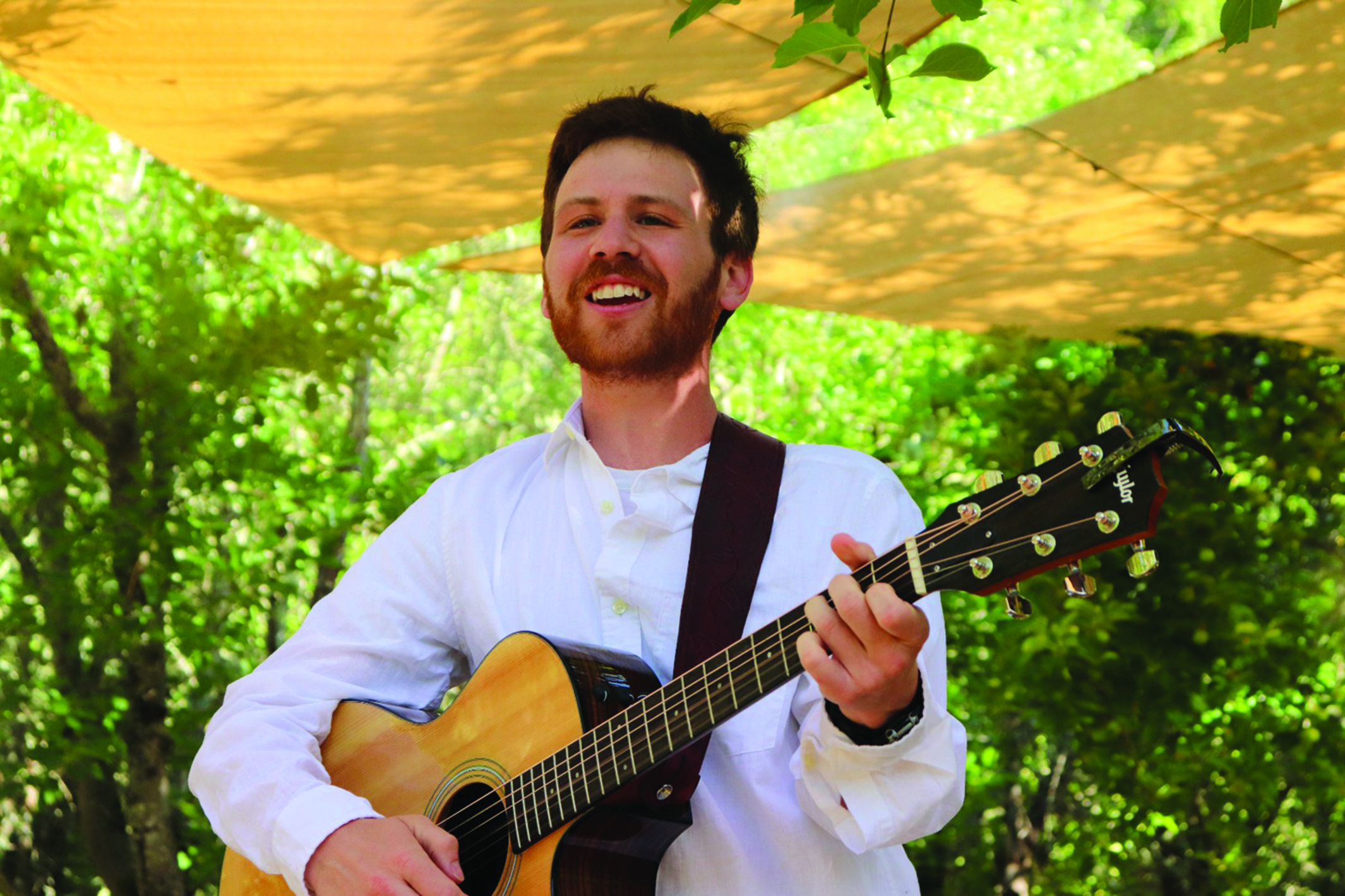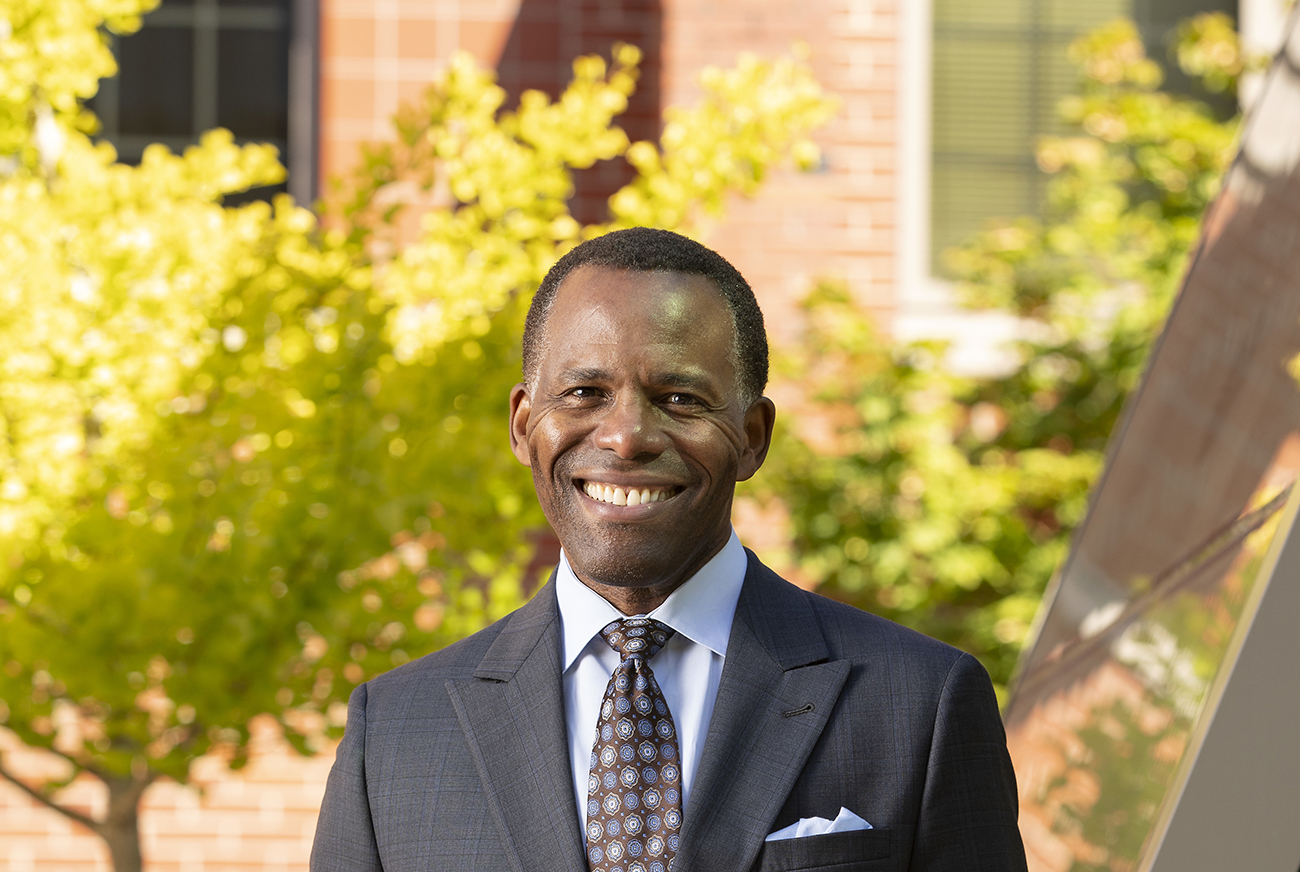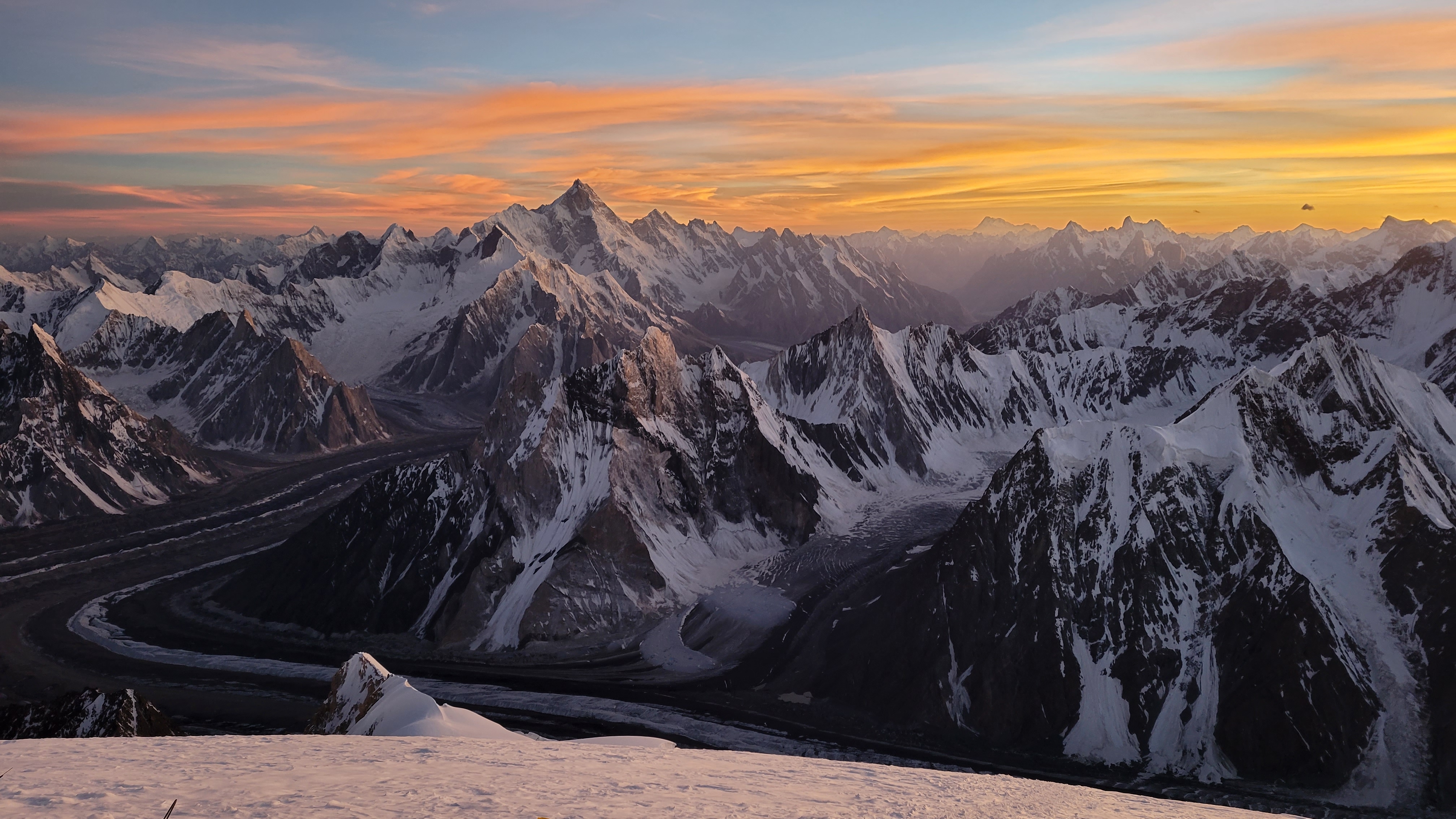The new PacTrail program turns the Northwest wilderness into a living classroom.
Grayson Shearer ’25 grew up backpacking near his hometown of Denver, and by the time he arrived for his first year at Puget Sound, there wasn’t much he hadn’t experienced on a trail. So when Shearer heard from a friend last spring about the university’s Pacific Trail Program, it wasn’t so much the challenge that appealed to him as it was the company.
“It seemed super fun and affordable, but for me, the biggest thing was the social aspect,” says Shearer, a senior majoring in communication studies. “Being with a group of people, specifically people I had never met before, it was really cool to get out there and share this totally new experience.”
Shearer was part of a small party of students, alumni, and staff who ventured into the wilds of Oregon and Washington in May for the second expedition of the PacTrail Program. Established in 2023, the program—which contributes to fulfilling students’ experiential learning requirement—was conceived by Mike Pastore, the university registrar, as a sort of domestic parallel to the university’s Pacific Rim Study Abroad Program. Where the PacRim Program takes a group of Puget Sound students to Asia, PacTrail offers a somewhat more accessible option that nonetheless promises meaningful impact.
Hannah Robideaux ’17, then the program coordinator for the university’s Sound Policy Institute, designed and led the inaugural two-week excursion, which involved hiking on the Olympic coast and ended with a climb up Mount St. Helens. Robideaux’s successor at the Sound Policy Institute, Sarah Petrillo ’19, took over PacTrail and led this year’s course, which aligns with the institute’s mission of using experiential learning to more effectively convey environmental policy issues. (Institute director Dan Sherman joined the backpacking portion to lead policy discussions.) “We want to help students understand that these places where we’re recreating are directly connected to policies that have been put in place—that’s what makes them accessible to us,” Petrillo says.
When the students gathered on campus ahead of the expedition this past May, such bigger-picture issues were addressed alongside more practical concerns: packing, meal planning, route navigation, map-reading—even, Petrillo says, “a little bit of wilderness medicine.” (Grayson, the experienced outdoors person, appreciated the guidance on how to fix splints and tourniquets on the trail.)

